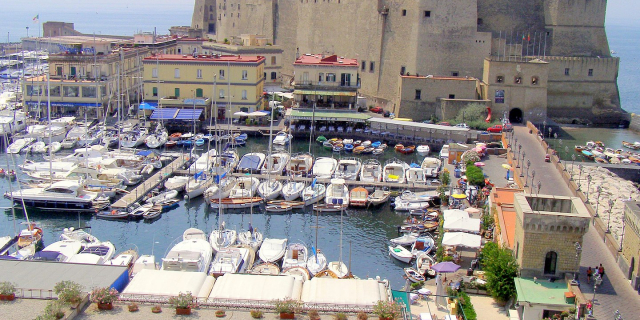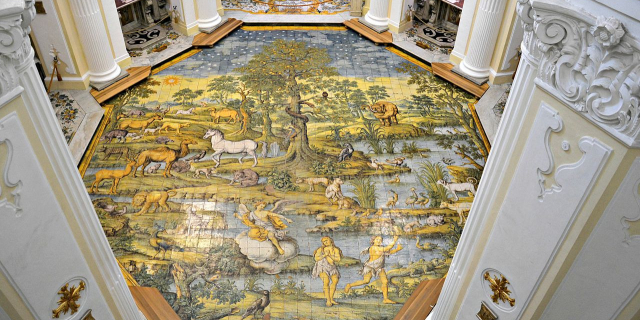Procida (Italian: [ˈprɔːtʃida]; Neapolitan: Proceta) is one of the Flegrean Islands off the coast of Naples in southern Italy. The island is between Cape Miseno and the island of Ischia. With its tiny satellite island of Vivara, it is a comune of the Metropolitan City of Naples, in the region of Campania.
Some Mycenaean Greek objects from the 16th to 15th centuries BC have been found on Procida. Traces have also been found on Vivara, an islet off the southwest coast of Procida. The first historically attested Greek settlers arrived from the Aegean to this island during the 8th century BC, followed by other Greeks of Magna Graecia coming from nearby Cuma.
The island is mentioned by the Roman satirist, Juvenal, in Sat. 3, 5, as a barren place. Later, during Roman rule, Procida became a renowned resort for the patrician class of Rome.
Middle AgesAfter the fall of the Western Roman Empire and the Byzantine reconquest in the Gothic Wars, Procida remained under the jurisdiction of the Duke of Naples. The continual devastation first by the Vandals and Goths, and later by the Saracens, pushed the population to resettle in a fortified village typical of medieval times. The population was sheltered by a cape, naturally defended by walls that peak on the sea that were later fortified, thus acquiring the name of Terra Murata ("walled land").
Testimonies from this period are from those who staffed the watchtowers on the sea, which became the symbol of the island. With the Norman conquest of Southern Italy, Procida experienced feudal dominion; the island, with a mainland annex (the future Mount of Procida), came under the control of the Da Procida family which continued to hold the island for more than two centuries. The most famous member of the family was John III of Procida, counsellor to Emperor Frederick II and leader of the revolt of the Sicilian Vespers.
In the 1339, the fiefdom, together with the Island of Ischia, was handed over to the Cossa family, of French origin, loyal followers of the Angevin dynasty then reigning in Naples. Baldassare Cossa was elected Antipope in 1410 with the name of John XXIII. In this period a deep economic transformation of the island began, as agriculture was slowly abandoned in favour of fishing.
 View of Corricella from Cape PizzacoModern era
View of Corricella from Cape PizzacoModern era
During the rule of Charles V, Emperor of Spain, the island was granted to the D'Avalos family. Pirate raids continued during this period. Particularly notable was one in 1534, led by the infamous Turk admiral Hayreddin Barbarossa.
In 1744, King Charles III of Spain made Procida a royal game reserve. In this period the Procidan fleet reached its zenith, backed by a period of flourishing shipbuilding. The population rose to approximately 16,000. In 1799, Procida took part in the revolts that led to the proclamation of the Neapolitan Republic. With the return of the Bourbon dynasty a few months later 12 Procidans were beheaded.
The Napoleonic Wars brought several episodes of devastation due to the island's strategic position in the naval engagements between French and English. In 1860, after the fall of the Kingdom of the Two Sicilies, the island became part of the newly formed Kingdom of Italy.
 Procida in 1972.20th century
Procida in 1972.20th century
The 20th century saw a crisis in Procidan shipbuilding due to competition with industrial conglomerates. In 1907 Procida lost its mainland territory, which became independent and is commonly called the Mount of Procida (Monte di Procida).
In 1957, the first underwater aqueduct in Europe was built in Procida.
In the last few decades, the population has slowly begun to grow. The economy remains in great part tied to the marine industry, although the tourist industry has also grown.

































Add new comment